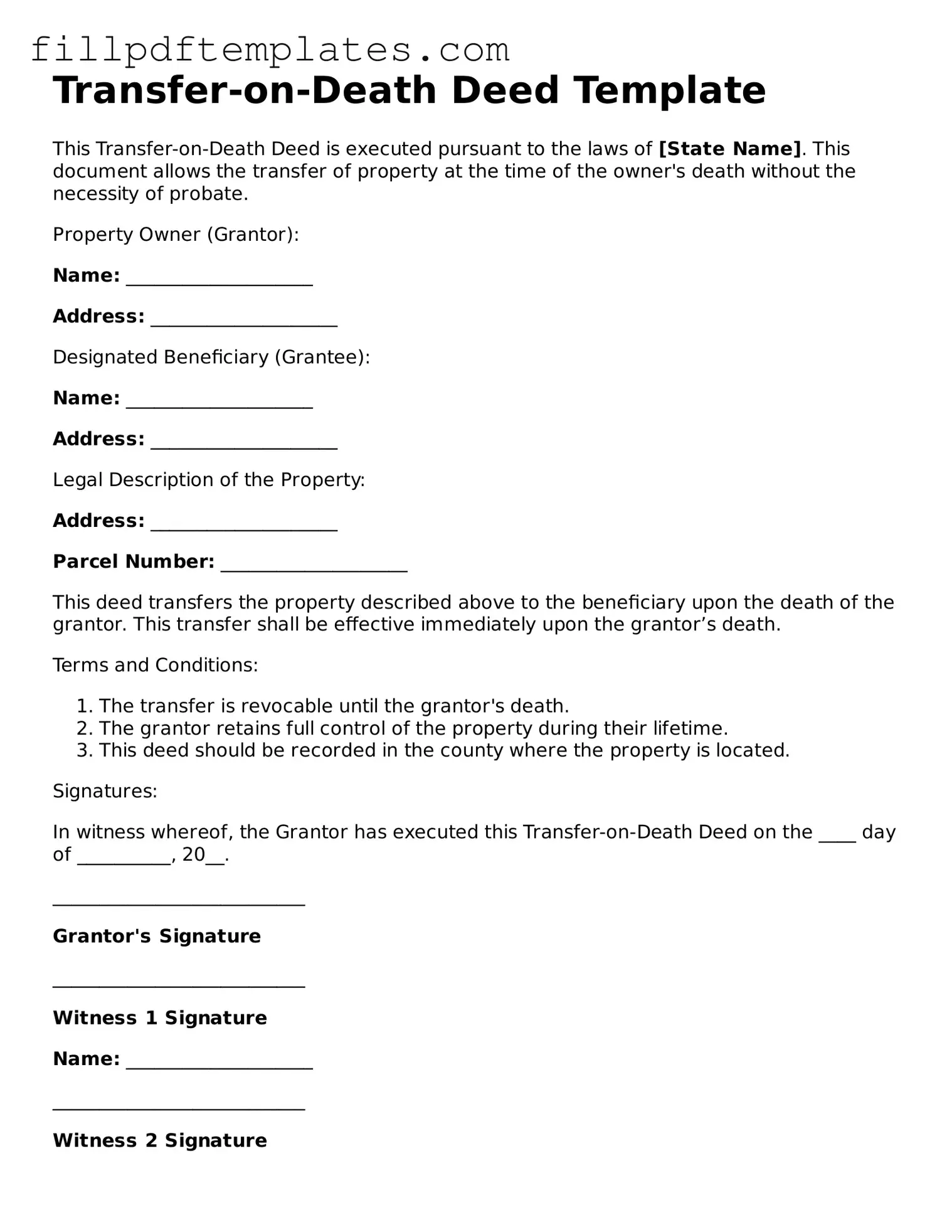Transfer-on-Death Deed Template
This Transfer-on-Death Deed is executed pursuant to the laws of [State Name]. This document allows the transfer of property at the time of the owner's death without the necessity of probate.
Property Owner (Grantor):
Name: ____________________
Address: ____________________
Designated Beneficiary (Grantee):
Name: ____________________
Address: ____________________
Legal Description of the Property:
Address: ____________________
Parcel Number: ____________________
This deed transfers the property described above to the beneficiary upon the death of the grantor. This transfer shall be effective immediately upon the grantor’s death.
Terms and Conditions:
- The transfer is revocable until the grantor's death.
- The grantor retains full control of the property during their lifetime.
- This deed should be recorded in the county where the property is located.
Signatures:
In witness whereof, the Grantor has executed this Transfer-on-Death Deed on the ____ day of __________, 20__.
___________________________
Grantor's Signature
___________________________
Witness 1 Signature
Name: ____________________
___________________________
Witness 2 Signature
Name: ____________________
State of [State Name]
County of ____________________
On this ____ day of __________, 20__, before me, a notary public, personally appeared ____________________ (Grantor's Name) and acknowledged the execution of this Transfer-on-Death Deed.
___________________________
Notary Public Signature
My commission expires: ____________________
